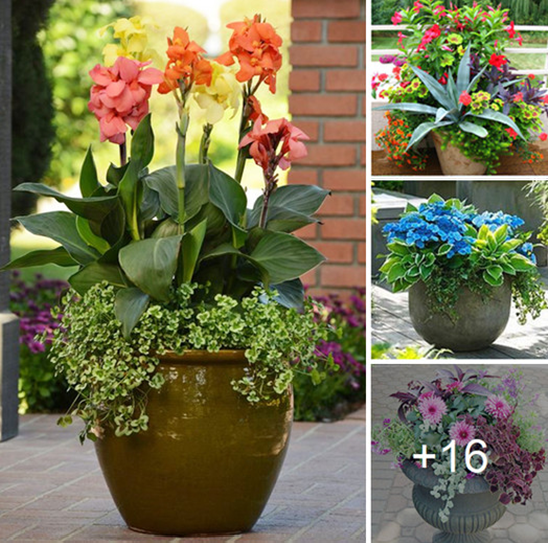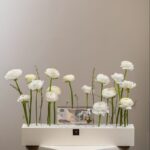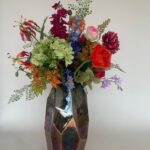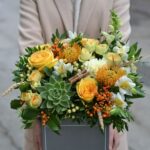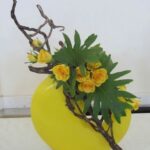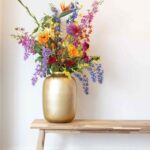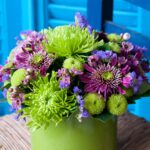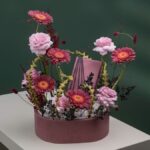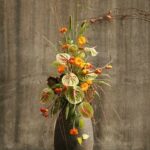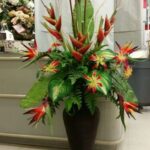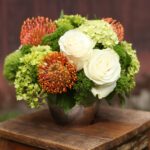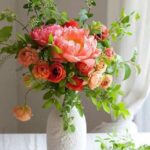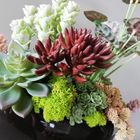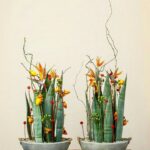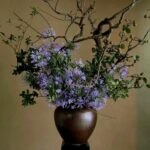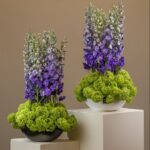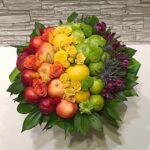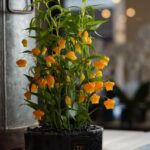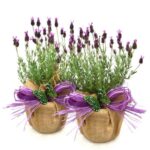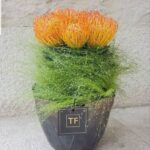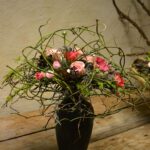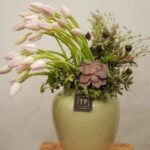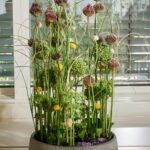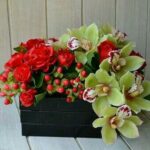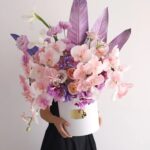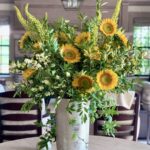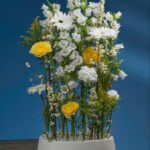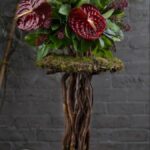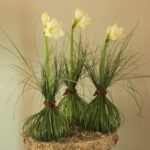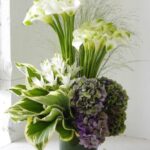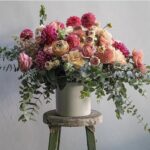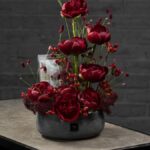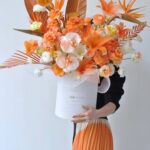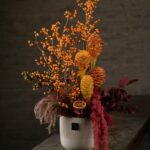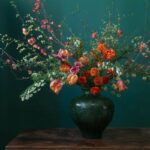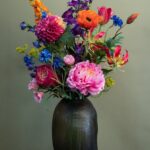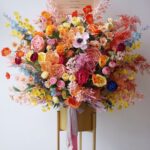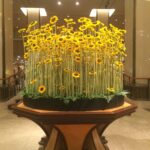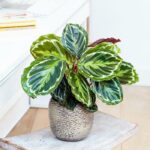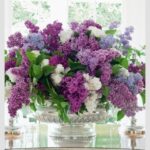Start smart! Spring Container Design 101
When it comes to design, there are no hard and fast rules for what works or doesn’t work. In general, you’ll want to choose a color palette to work with, and consider the shapes and textures of your intended design.
Buying in bulk is a good idea for spring planters. If you run out of space in a container, you can add excess material to your garden beds or put them in other pots.
You can also work with a wider range of color and texture when you have more containers to work with. Let’s take a closer look at the different elements you’ll want to consider, and remember:
Crazy in color
By carrying a color or theme through each container, each individual planter can stand out on its own, while still belonging to an overall design.
For example, including yellow flowers in each pot and window box synchronizes the entire scheme, even if each planter is unique from the others.
-
Quick tip: Add some pansies with colorful faces to add more subtle gradations of color.
Your finished container should look like a completely natural design, as if it is a giant plant with elements that complement each other.
Texture and shape, taking into account growing requirements
It’s tempting to focus entirely on the flowers included in your spring planter, but we won’t fall for it. We also want to consider foliage, the shape of leaves and flowers, and the general growth habit of each plant.
-
Quick Tip: The blue-green, frilled foliage of an acacia is just as attractive as its flower, and when that acacia is between blooms, you still have its beautiful leaves. They go well with variegated ivy, providing interest and color even when the flowers are long gone.
It’s imperative that you choose the right plants for your design, and that decision starts with where your planter is placed. Consider the following:
Sunlight
How much exposure does your planter get?
You will have different options if your planter is fully exposed to the sun all day long, or tucked away in a corner that is shaded from most of the sun’s rays.
Water
Will your plant get plenty of rainwater, or is it up to you to water it?
A plant’s drought tolerance is an important consideration when deciding on your spring planting design.
Place
How big is the container you are planting in?
A large 14-inch planter requires a lot more plant material than a few 6-inch pots lining your steps. If you’re working on a tight budget, you can buy plants that will fill the space over time.
Designing planters is also a great project for gardeners with small spaces. Just think about what you have room for and what growing conditions are there, buy pots that fit and get started.
Annuals or perennials
Do you want your plants to have some staying power and interest for several seasons, or will you be updating with new items continuously?
I like to design planters with a mix of annuals and perennials. Many spring flowering annuals burn out in the summer heat and will need to be replaced with fresh material, while perennials can be added to your garden when the season is over and with good care will grow for years to come.
Your choice of potting mix, fertilizer and accent material also makes a big difference. See more about these items in the sections to come.
How many plants do I need?
There are no hard answers to determining how many plants you need. This all depends on the style of planter you’re after, what you’ll be growing and the budget you have to work with.
If you’re the patient type and want to see your spring planter fill up over time, you won’t need much! As the season warms, the plants will happily fill in and erase any gaps or negative space.
Here’s a container with a 12-inch diameter that only required six 4-inch annuals to fill it out over time.
On the other hand, if you want to see that the container is full from the start, you will use a lot more material. The container pictured below is 12 x 12 inches and contains four 6-pack annuals (three pansies, one alyssum), one 1-gallon hellebore, two 4-inch annuals, and a whole bunch of forsythia branches. The total amount of plants you need is entirely up to you and your taste, with an understanding of the growth habits of the individual species and varieties!
Thriller, Filler and Spiller
When building your spring planter, remember the three elements of successful container design: thriller, filler, and play.
Let’s take a look at each of these individually:
Exciting to see
The thriller is the main eye candy of the design. It could be the brightest color, or perhaps an interesting and eye-catching foliage. The thriller is the centerpiece of your container, and everything else should compliment it.
Fill it out
The filler is the material used to eat up space and cover soil. These are usually flowers or grasses that add some variety, color and interesting textures without becoming the main feature.
No need to catch these spills
The player is anything that flows over the side of the container. It can be a trailing material such as a variegated ivy or vinca, or a bushy bunch of flowers that spills over the edge.
With an accent
Anything beyond the thriller, filler and player is an accent.
I like to make the accent unique to each container. I have used cattails and dried lotus seed pods; Willow branches are also popular additions to a container.
I highly recommend purchasing these additional materials from your own yard and garden to tie everything together. A spring planter with some curly willow branches might look nice, but the design will be 100% yours if you instead include some colorful evergreen branches or interesting twigs from your own garden.
 Flower Love
Flower Love
